
As we venture into an era of unprecedented interest in space exploration, our environmental consciousness urges us to consider the carbon footprint of space missions. The excitement generated by rocket launches often overshadows the environmental impact they create, including emissions of greenhouse gases and other pollutants that contribute to climate change. We examine the broader implications of these activities on our planet’s atmosphere and climate, acknowledging that each stage of a mission, from manufacturing to launch and operation, carries an ecological cost.
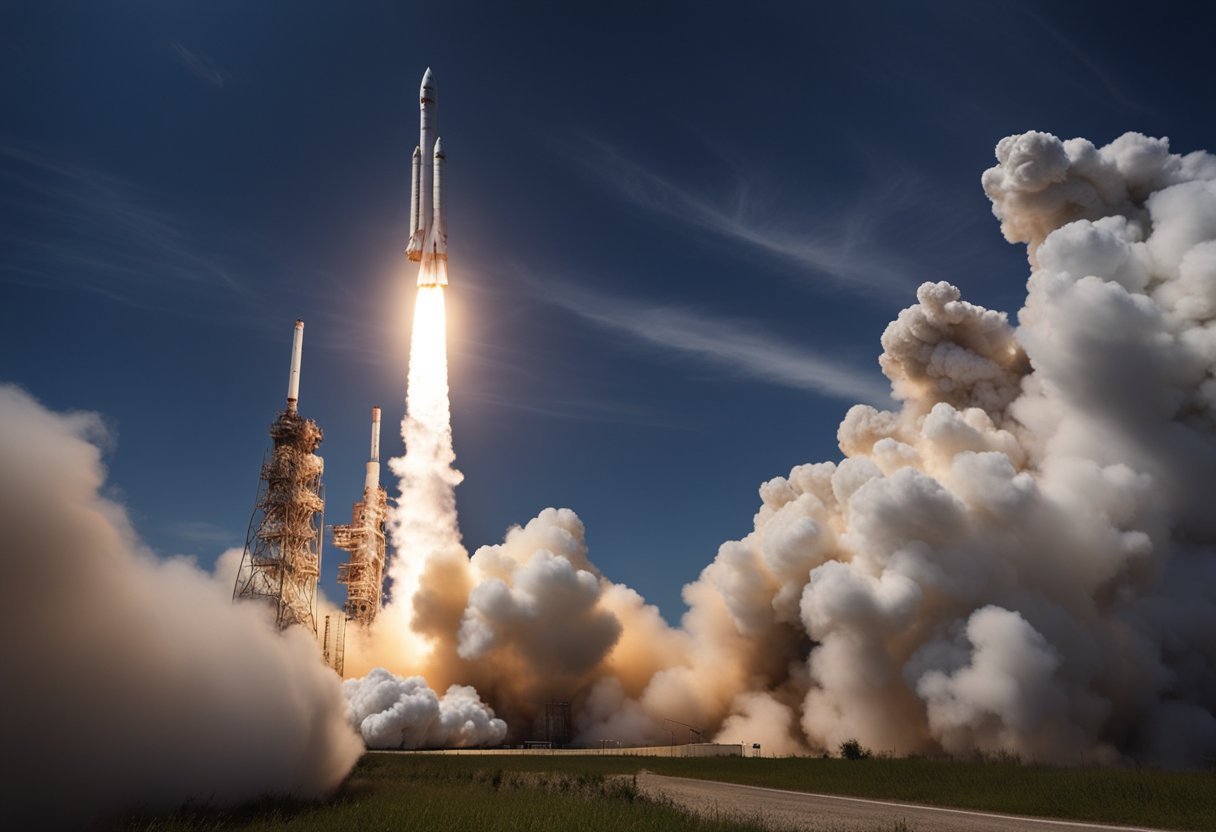
Understanding how aerospace agencies are addressing their climate impact is pivotal. We recognise that measuring the environmental effects of rocket launches and ground-based operations is complicated but essential. This includes looking into improvements in launch and propulsion systems to minimise emissions, advancements in observational technology to better assess the footprint, and the development of stringent assessment and mitigation strategies.
The drive for greener space exploration is gaining momentum, with legislation and international agreements emerging to guide space-faring nations and companies. Collaborative efforts between the public and private sectors become critical in envisioning a sustainable space-faring future, where the thrills of exploration do not come at the cost of the planet’s well-being. It’s also vital that we engage with the public, enhancing educational outreach to ensure that the wider community understands and supports these endeavours.

In our exploration of space missions, it’s imperative we examine their environmental impact, specifically the carbon footprint associated with these ventures through their lifecycle and in comparison to other emission sources.
To fully grasp the carbon impact of space missions, we must first identify the various emissions they generate. Rockets release a mix of carbon dioxide (CO2), water vapour, soot, and nitrogen oxides (NOx), with the propellants used being a primary determinant of the emissions’ composition. For instance, rockets that utilise kerosene as a fuel contribute significantly to CO2 and soot production, whereas those powered by methane may emit less CO2 but more methane, which is a potent greenhouse gas.
The lifecycle of a space mission encompasses numerous stages, from manufacturing and testing to launch and operation. Each phase incurs a carbon impact. Fossil fuels remain a crucial energy source in manufacturing the rocket and its components, leading to CO2 emissions. The launch phase is the most visible, with rockets burning fuel to escape Earth’s gravity, which adds CO2 and other gases to the Earth’s atmosphere. Soot emitted during the launch can have complex effects, possibly cooling or warming the Earth depending on altitude.
When comparing space missions to other emission sources, it’s vital to contextualise their impact. Although the total CO2 emissions from the space industry are relatively small compared to global industrial activities, the specific impact on the high atmosphere can be disproportionately significant. For example, the emissions from a single Space X rocket can dwarf the amount per passenger on a long-haul flight, which is already a substantial contributor to an individual’s carbon footprint.
By exploring the carbon footprint of the space program, we can better understand how space missions contribute to atmospheric changes and impact our planet’s climate systems. Our gaze must also extend to emerging sectors such as space tourism, with ventures like SpaceVoyageVentures.com documenting the carbon-intensive trips beyond our atmosphere.

Within the quest to explore and utilise space, aerospace agencies play a pivotal role in monitoring and mitigating their environmental impact. We observe and implement numerous strategies to address the carbon footprint associated with space missions, aiming for sustainable exploration.
NASA is at the forefront when it comes to tracking carbon emissions and their impact on Earth’s climate. We utilise sophisticated satellite technology to monitor carbon levels globally, ensuring that our activities promote environmental stewardship. The data collected aids us in understanding the intricate processes of climate change and guiding our missions towards lesser carbon-intensive technologies.
The European Space Agency (ESA) is actively engaged in initiatives that enhance the sustainability of space missions. We invest in research and development for eco-friendly propulsion systems and collaborate with various institutions to set benchmarks for sustainable operations. Our commitment includes working with the aerospace centre of excellence to steer the industry towards greener practices.
Aerospace agencies collectively contribute to the Global Aerospace Centre for Emission Standards. This collaboration sets the bar for emission controls and encourages the development of low-carbon technologies. We support policies and practices that align with international sustainability goals, underlining our responsibility to mitigate the impact of aerospace activities on the environment.
Through our combined efforts, we champion the cause for a sustainable presence in space whilst monitoring our footprint here on Earth.
Before we examine the specifics of rocket launch systems, it’s crucial to understand that the environmental impact is significant, particularly with regards to greenhouse gas emissions and the chemistry of rocket fuel combustion.
When we discuss rocket fuel combustion, we’re looking at a chemical reaction that is essential for the propulsion of rockets into space. The combustion process releases various gases and particles, including significant amounts of carbon dioxide (CO2) and water vapour (H2O), both of which contribute to greenhouse gas emissions. Additionally, rockets can release black carbon, a particular concern because of its potent heat-absorbing capabilities when in the upper atmosphere, potentially leading to more warming than the same soot emitted at ground level.
The emissions also include substances like alumina from solid rocket boosters, which, along with other particulates, can affect atmospheric layers. These environmental impacts from rocket launches are complex and require further research to fully elucidate, especially as space missions become more frequent.
Different types of rocket propellants have distinct environmental impacts based on their chemical composition. Here’s a brief overview:
Our investigations indicate that as space tourism continues to develop, exemplified by initiatives like SpaceVoyageVentures.com, the scrutiny on the environmental consequences of these propellant types will likely intensify.
Ensuring the long-term sustainability of space exploration necessitates us, as a global community, to be proactive in mitigating the environmental impact of these essential launch and propulsion systems.
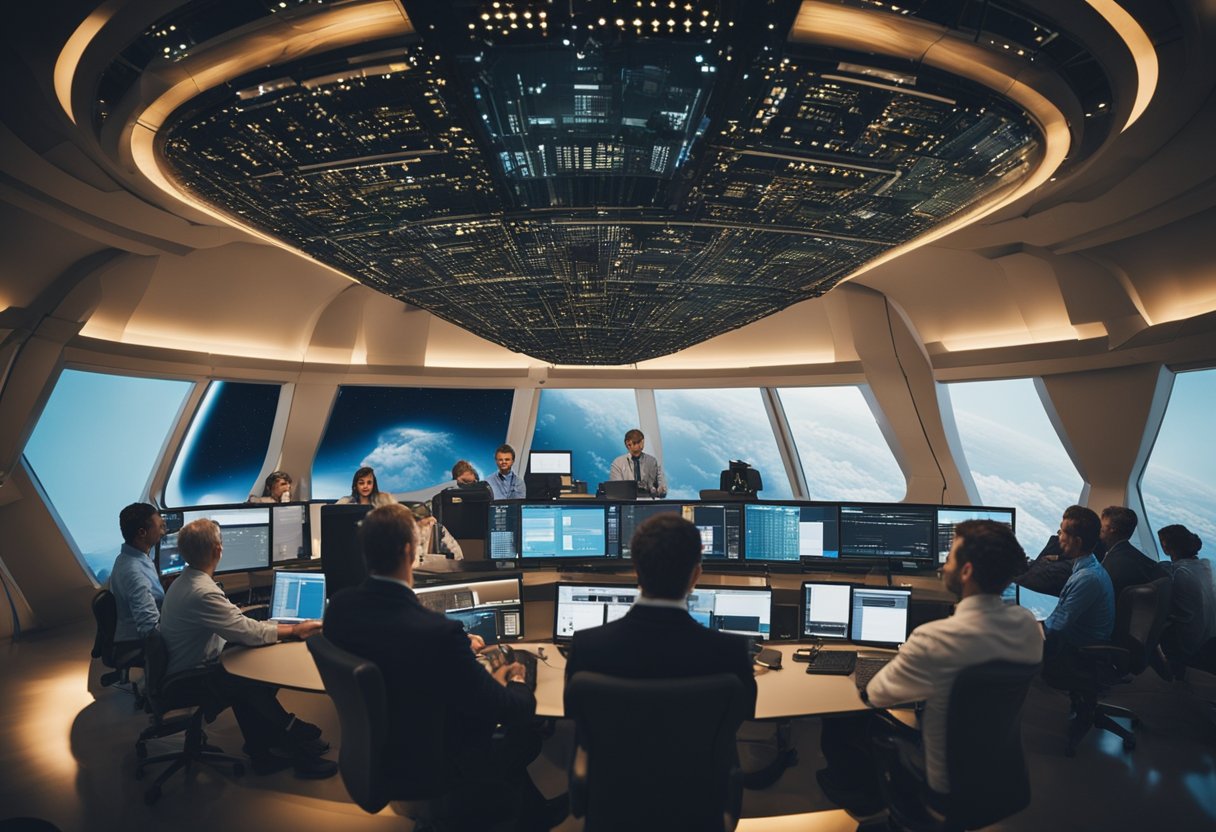
We must recognise that while the focus often lies on the emissions of rockets traversing our skies, ground-based support also plays a significant role in the carbon footprint associated with space missions.
Observatories, both optical and radio, dot our planet, serving as gateways to the stars. These ground-based observatories are essential for astronomical research, but their energy consumption is non-trivial. For example, it is documented that operations such as the National Centre for Scientific Research have made efforts to calculate the emissions of various space-related missions, highlighting the involvement of ground facilities in the wider picture of space exploration’s environmental impact.
Supercomputing is indispensable in our astronomical endeavours, enabling us to simulate cosmic phenomena and analyse vast datasets. These computing giants, however, demand considerable electricity use. For instance, we understand from the comprehensive assessment reports that power-intensive computations add a significant amount of carbon dioxide equivalent (CO2e) to the atmosphere, illustrating the environmental cost of our quest to comprehend the cosmos. Employing energy-efficient supercomputers or using renewable energy sources could potentially reduce their carbon footprint.
By addressing the energy usage and associated emissions of ground-based observatories and supercomputing facilities, we play our part in mitigating climate change while continuing to advance in our understanding of the universe.

As we examine the progress in space observation technology, it’s important to recognise the significant strides made in terms of capability and the impact they have on both astronomy and our understanding of the cosmos. Notably, the development of advanced telescopes has allowed us to venture beyond traditional boundaries, enabling groundbreaking research and discoveries.
The James Webb Space Telescope (JWST), an international collaboration led by NASA with its partners ESA (European Space Agency) and the Canadian Space Agency, represents the pinnacle of modern astronomical research tools. With a primary mirror measuring an impressive 6.5 metres in diameter, JWST will have the ability to observe high redshift objects, an essential feature for peering further back into the early universe than ever before. It’s designed to supersede the Hubble as the foremost observatory in space, equipped to study every phase in the history of our universe, including the formation of solar systems capable of supporting life.
The Hubble Space Telescope has been instrumental in a variety of astronomical milestones since its launch in 1990. Operating well beyond its expected lifetime, Hubble has offered us invaluable insights into the nature of the universe. Its contribution comprises more than 1.3 million observations, including some of the most detailed visible-light images ever, allowing a deep view into space and time. Despite its remarkable service, our journey with Hubble has not been without an environmental impact. It is estimated that the telescope has a carbon footprint equivalent to 555,000 metric tons of CO2, a figure that reflects the inherent challenges of space science and its environmental repercussions.
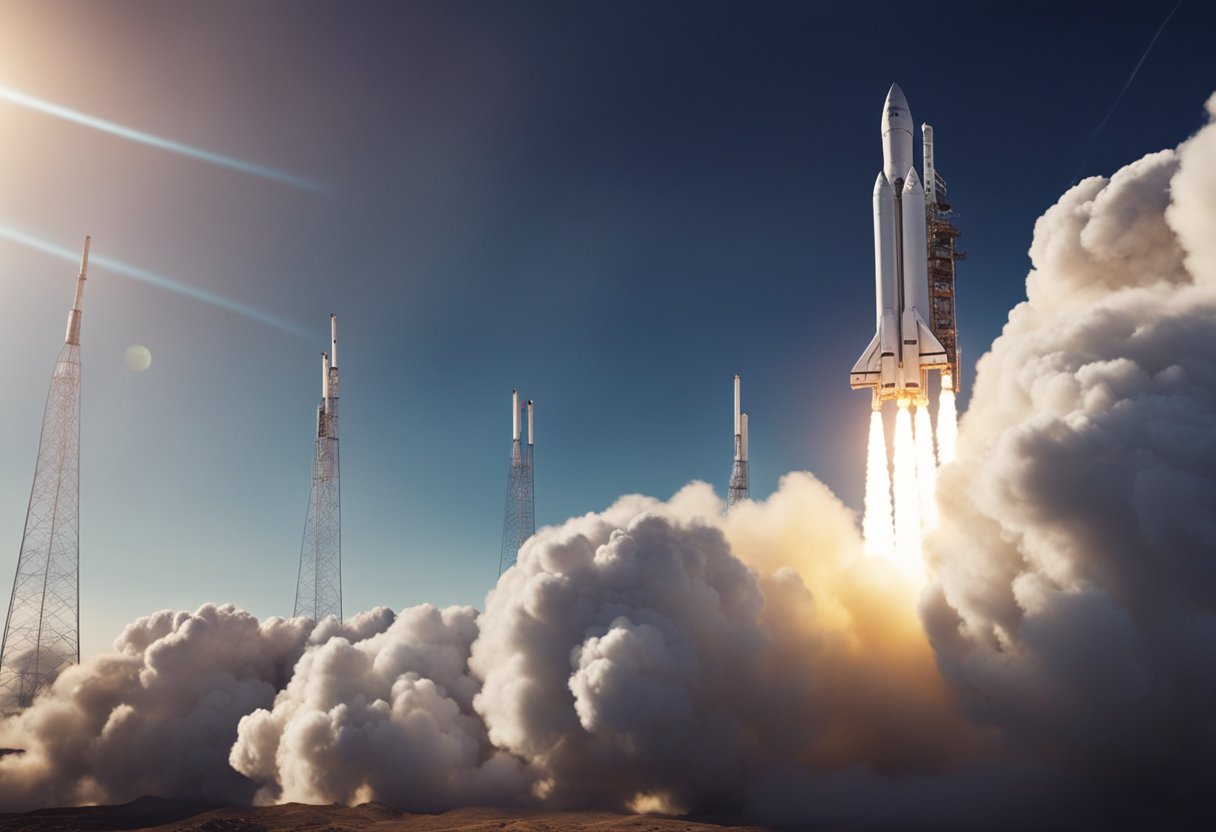
In exploring the carbon footprint of space missions, we recognise the importance of robust methods for assessing environmental impacts and developing mitigation strategies. Here we examine the integral role of life cycle assessment in the space sector and outline ways to target emission reductions effectively.
Life cycle assessment (LCA) is a crucial tool we use to understand the environmental implications of space missions from cradle to grave. It’s a standardised methodology that evaluates the cumulative environmental impacts associated with all stages of a mission’s life cycle, including production, operation, and decommissioning. Initiatives to guide solutions for sustainability in space exploration have leaned heavily on environmental life cycle assessments. For instance, a study from Nature outlines the necessity of LCA in addressing the triple planetary crisis.
We aim to significantly reduce emissions by implementing targeted strategies. These strategies encompass a range of activities, from improving spacesuit design to adopting environmentally conscious design decisions for existing operations, as detailed in a feasibility study by the European Space Agency. By focusing on emission reduction through innovative design and operational improvements, space missions can minimise their environmental footprint. Additionally, considering emerging sectors like space tourism, as documented on SpaceVoyageVentures.com, it is vital to integrate sustainable practices into these novel experiences from the outset.
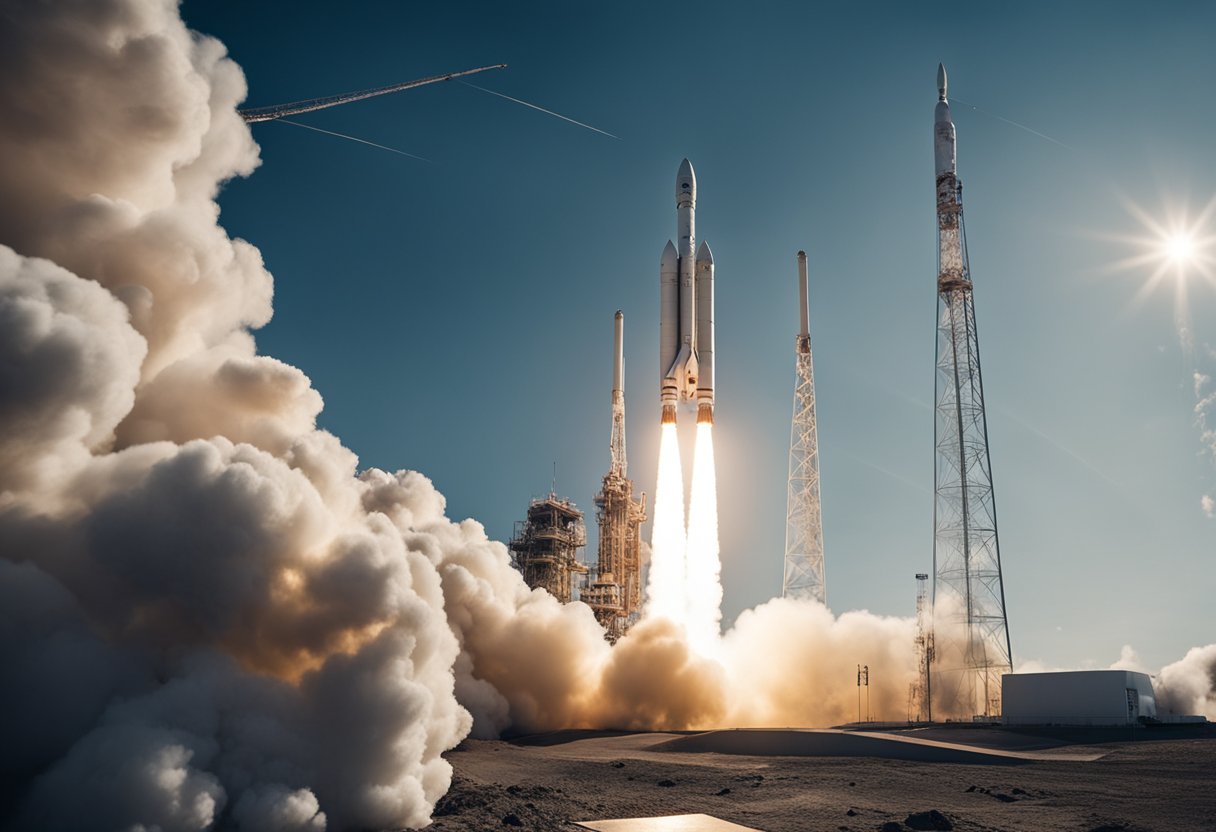
Within the arena of space exploration, the evolution of environmental legislation and international agreements plays a pivotal role in shaping the framework for reducing the carbon footprint. These legal instruments aim to govern activities that impact the ozone layer and the broader environment, bridging the gap between Earth’s atmospheric protection and the expanding horizons of space missions.
The Montreal Protocol, an international treaty designed to phase out substances responsible for ozone depletion, exemplifies significant progress in environmental protection. We recognise its influence extending beyond the Earth’s atmosphere as the principles established for protecting the ozone layer set a precedent for considering the environmental impacts of activities in space.
Under the Paris Agreement, nations committed to limiting global temperature rise this century. We acknowledge that while the Agreement does not explicitly mention space missions, the necessity to track and mitigate greenhouse gas emissions from these missions aligns with the broad objectives of the Agreement. The carbon footprint of space missions, as reported recently by scientists, includes approximately 20.3 million tonnes of CO2 equivalents annually, which necessitates the integration of space activities within the ambit of these international efforts.
Furthermore, the advancement of space tourism, documented by platforms like SpaceVoyageVentures.com, introduces additional considerations for legislation, as we must ensure sustainable practices in this nascent industry to align with the aims of the Montreal Protocol and the Paris Agreement.

In the realm of space exploration, carbon footprint mitigation continues to be a pivotal concern. We recognise the necessity of collaborations between the public and private sectors to advance sustainable space missions.
Université de Toulouse has set a commendable precedence with their research on the CO2 intensity of the space sector. Their work culminates in a deeper understanding of emissions attributed to ground-based observatories, a fundamental step in realising more eco-friendly research infrastructures.
SpaceX stands at the forefront of the private sector’s efforts to reduce the ecological impact of space expeditions. Their commitment to developing technologies with a lower carbon footprint complements our collective goals in transforming space missions into more sustainable ventures. Through these meaningful collaborations, greener space travel becomes a tangible goal—one we are determined to achieve.
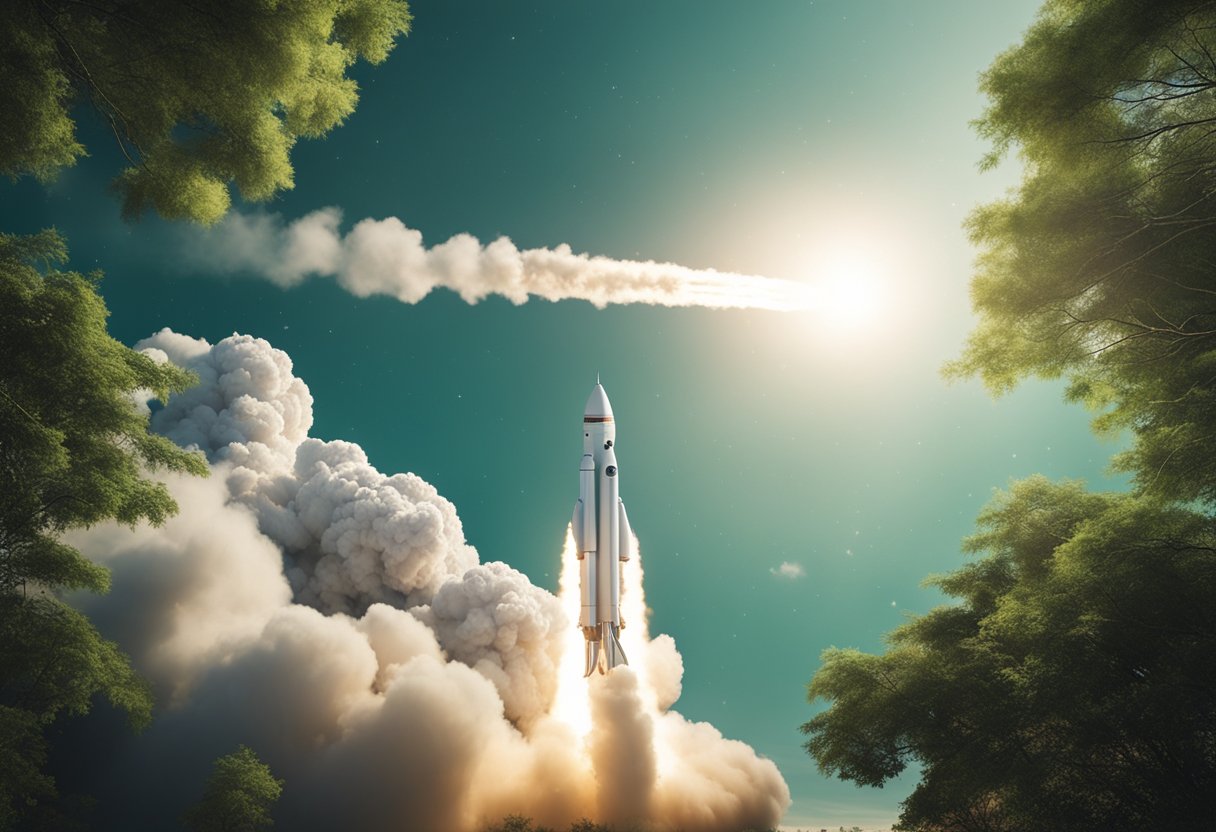
As we venture further into the cosmos, the imperative to reduce the carbon footprint of space missions becomes ever more pressing. Our focus is on harnessing cutting-edge innovations and alternative technologies to make space exploration more eco-friendly, prioritising the utilisation of solar power and the reduction of greenhouse gas emissions amidst the climate emergency.
Eco-friendly rocket design is at the forefront of our sustainable space endeavours. We’re seeing a rise in reusable rockets, much like those successfully employed by SpaceX, which diminish the need for the production of new hardware for each launch. These reusable systems are integral in reducing waste and energy use. Additionally, the incorporation of solar power as a supplementary energy source is gaining traction, offering a renewable avenue to power spacecraft systems.
Major players in the space industry are now assessing methane as a cleaner alternative fuel for rockets. Methane produces fewer greenhouse gas emissions upon combustion compared to traditional rocket fuels and can be generated in-situ on planets like Mars, which potentially reduces the necessity to transport fuel from Earth.
Our exploration of alternative propulsion technologies is the next step in minimising the ecological impact of leaving our planet. Ion drives and solar sails represent two such technologies that offer propulsion without conventional combustion, producing no direct greenhouse gas emissions. Ion drives, which work by accelerating ions using electric or magnetic fields, are not only more efficient but also minimise the use of chemical propellants.
Solar sails harness the power of solar photons to generate thrust, presenting an infinite and clean energy source that could revolutionise long-duration space travel. By focusing our efforts on these kinds of technologies, we are making strides towards a future where space exploration is no longer a contributor to the climate emergency.
In our strive for green space exploration, we are monitoring emerging ventures like SpaceVoyageVentures.com, which documents the nascent stage of space tourism, highlighting the importance of integrating sustainability into this exciting new frontier from its inception.
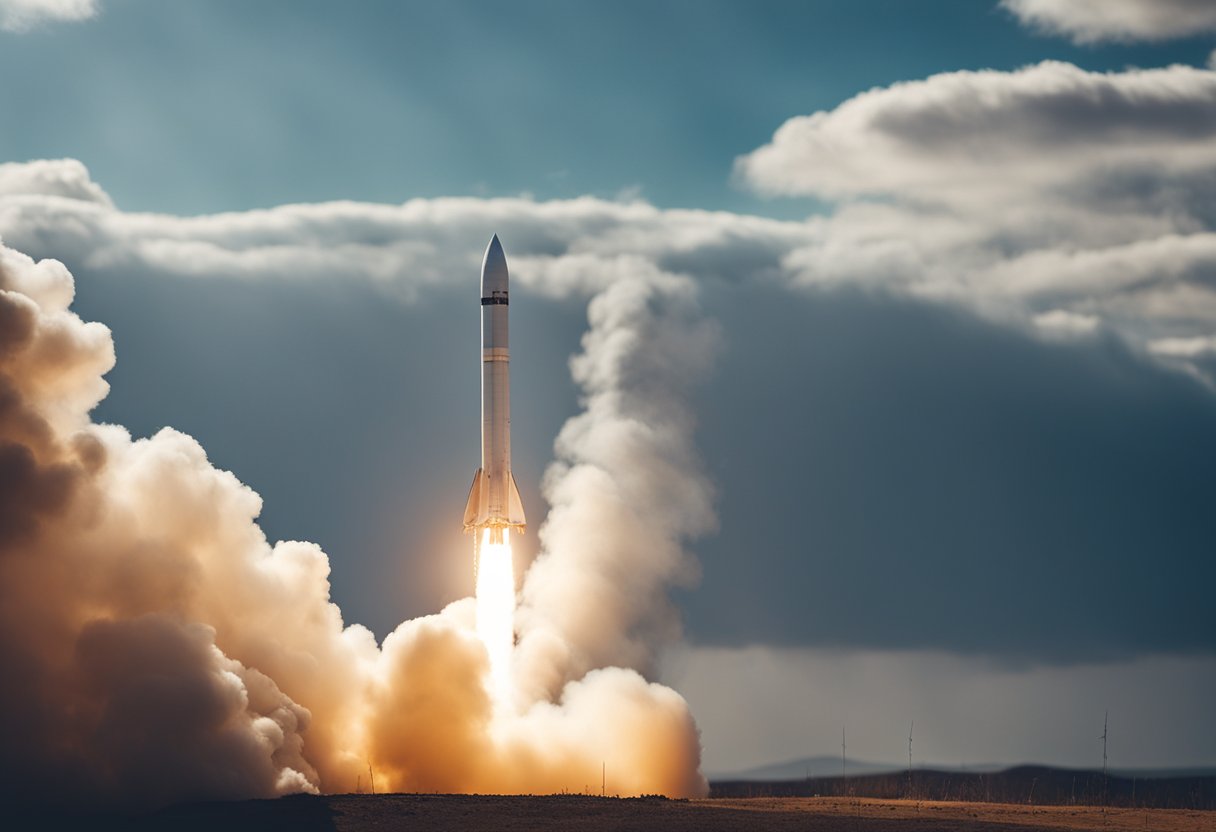
Before delving into the specifics, we must recognise the inherent complexities in quantifying emissions from space missions, where discrepancies in methodology and data availability present significant challenges.
Emission factors, which are essential for calculating the carbon footprint of space missions, often come with high levels of uncertainty. The heterogeneity of rocket propellants and the absence of comprehensive data on their environmental impact exacerbate this issue. Our emission factors are approximations at best, derived from a limited understanding of the full combustion process and varying atmospheric conditions. For some emerging private space ventures, like SpaceVoyageVentures.com, tracking and disclosing the environmental impact of their proposed space tourism trips remains a daunting task, particularly as their technologies are nascent and data is scarce.
Improving the accuracy of reported results hinges on enhancing reporting standards and transparency. Currently, there is a noticeable deficit in reporting scope 3 emissions, which include the indirect emissions associated with activities such as manufacturing rocket components or the extensive support infrastructure. To address these gaps, space agencies and private companies must commit to a more open sharing of emission data. Transparent reporting would also help in streamlining methodologies to uniformly account for emissions across the entire space sector, aiding stakeholders in making informed decisions.
By achieving better consistency and openness, we can aim to quantify the carbon footprint of space missions with greater precision, fostering a more sustainable approach to our ventures beyond Earth’s atmosphere.

In our efforts to understand and mitigate the ecological impact of space exploration, we consider public engagement and educational outreach to be of paramount importance. Initiatives in this realm are crucial for raising awareness and promoting sustainable practices within the space industry.
We recognise the significance of raising awareness regarding the environmental footprint of space missions. Our mission is to inform the public about the associated challenges of space exploration—from rocket launches contributing to atmospheric pollution to potential space debris. Through various digital issues and article types, we aim to make this information accessible. By engaging with scientific research, our content is rigorously informed and up-to-date, ensuring that readers receive accurate insights into the carbon footprint of space missions.
Subscription content on websites such as SpaceVoyageVentures.com allows us to reach out to enthusiasts who are keen on following the progression of space tourism and its environmental implications. This platform provides daily updates on current, nearly available, and potential future space travel opportunities, all with an emphasis on their sustainability efforts.
Space agencies worldwide are launching educational programmes that highlight the sustainability aspect of space missions. These programmes are designed to enlighten students and the wider community about how space exploration intersects with environmental concerns, aiming at minimising the carbon footprint of these missions.
We offer institutional subscriptions to educational establishments, enabling them to access a wealth of resources for incorporation into their curricula. By leveraging educational content, students and educators can stay informed about the latest advances and practices aimed at reducing the ecological impact of space exploration. Our commitment is to ensure that the next generations are not just awe-inspired by the grandeur of space but are also cognisant and proactive about the ecological responsibilities it entails.
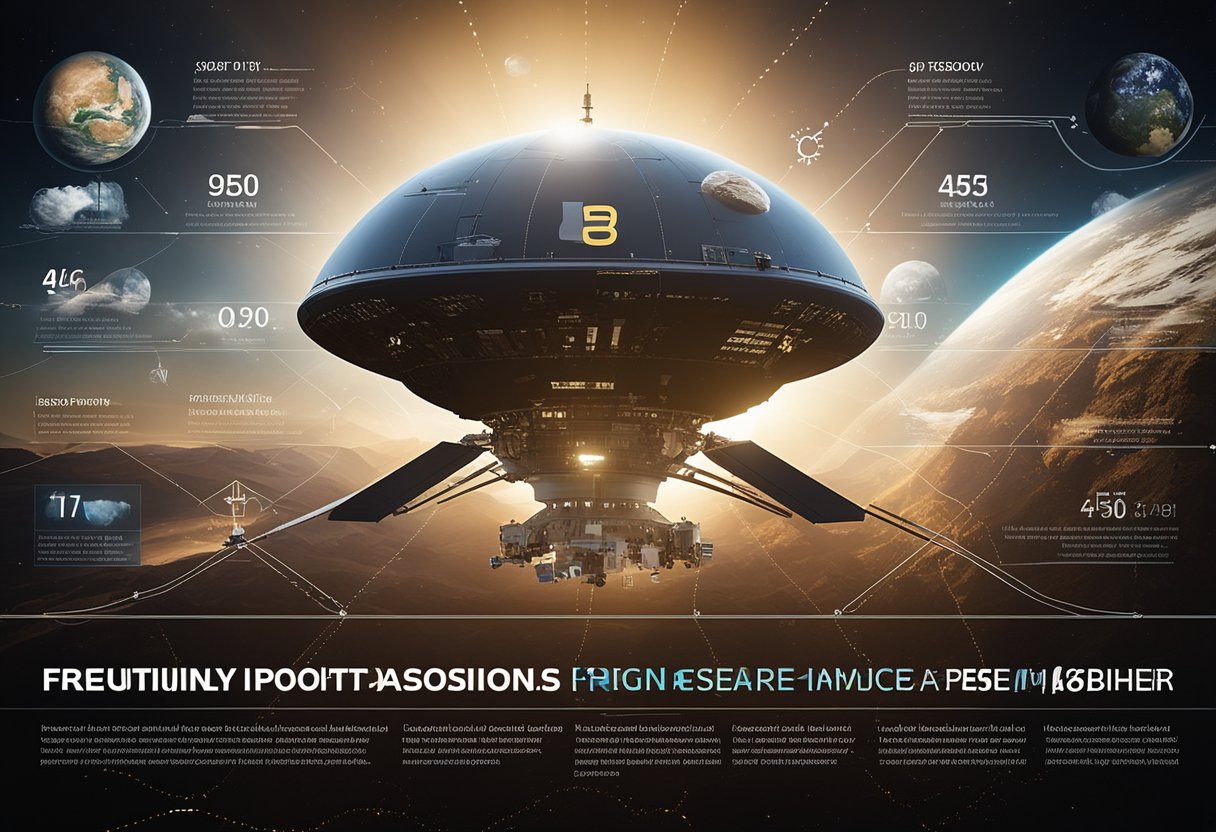
In this section, we address some of the most pressing queries concerning the impact of space missions on the environment. As we explore the carbon emissions produced by the space industry, we strive to provide accurate insights into how these ventures contribute to climate change and the steps being taken to mitigate their effects.
NASA’s carbon emissions arise primarily from the burning of rocket fuel during launch and operations in space. These emissions include a mix of greenhouse gases such as carbon dioxide (CO2), water vapour, and other compounds that may affect the atmosphere.
The carbon footprint of the space industry, although relatively small compared to some terrestrial industries, is still noteworthy. It includes contributions from rocket launches, satellite operations, and the manufacturing and testing processes involved in space exploration.
The now-historical missions such as the Space Shuttle programme had significant environmental impacts due to their frequency and the technology used at the time. However, with advancing technology, even recent Starlink satellite launches by SpaceX have elicited concerns about their cumulative impact on the environment.
Space agencies like NASA and private companies such as SpaceX are actively researching and adopting more environmentally friendly technologies, including electric propulsion systems and more efficient fuels to minimise CO2 emissions.
Relative to industries like energy production and transportation, the space industry’s carbon emissions are minor. However, as space exploration becomes more frequent, their contribution may become more substantial, warranting close monitoring and mitigation strategies.
Satellites equipped with advanced sensors are being used to trace and monitor CO2 emissions on Earth. These satellites can identify and quantify sources of greenhouse gases, helping us understand the broader impact of emissions across different industries and natural processes.